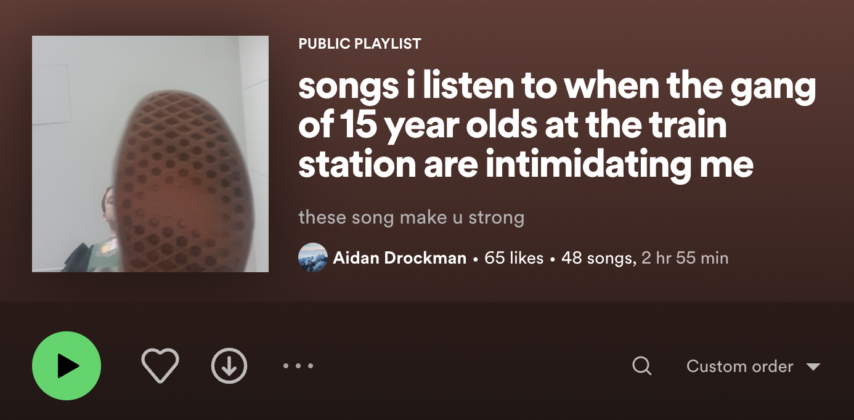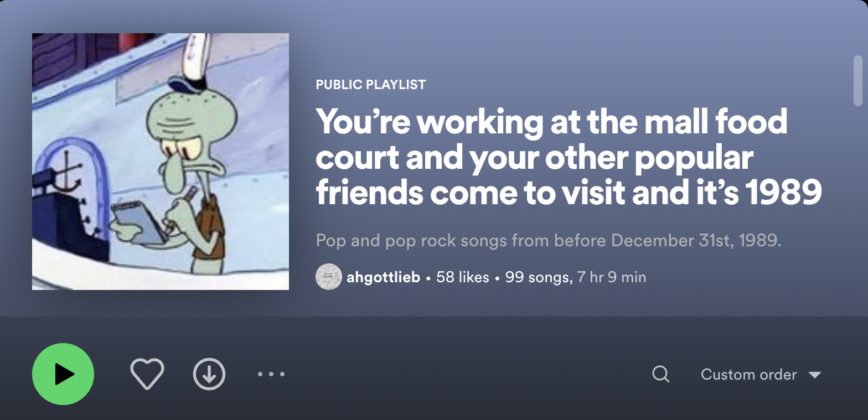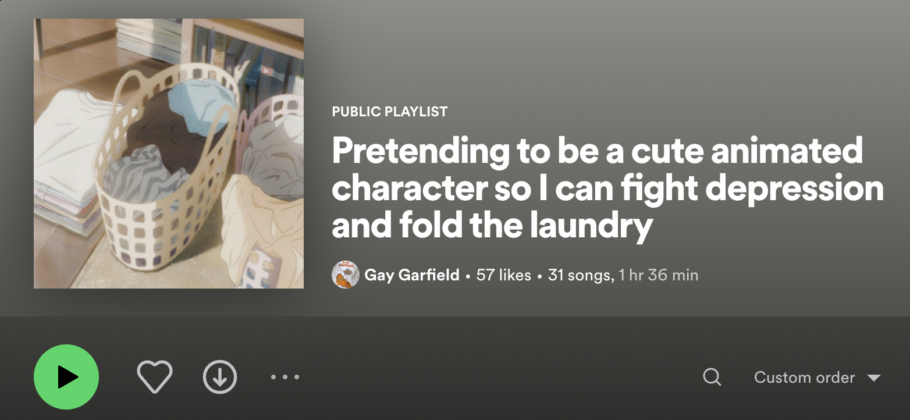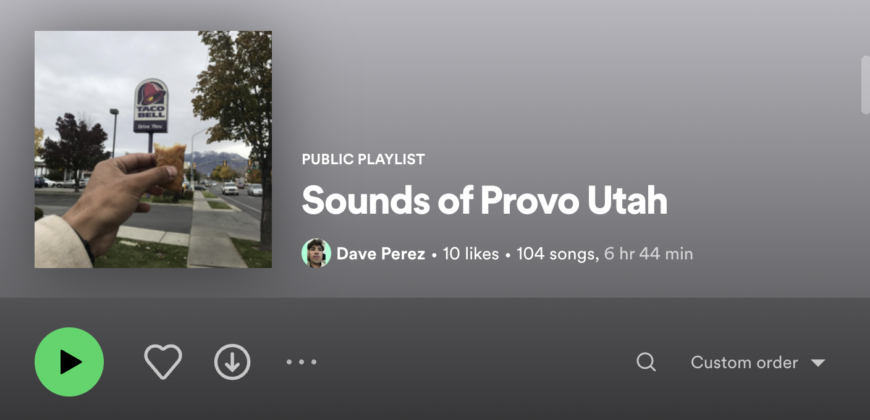
Emma Townsend stood in a storefront, passing out Ritz cracker samples at Lee’s Market. It was her second day on the job when she decided she hated it.
She started to notice the different types of encounters she had with customers; some took a moment to acknowledge her, but most ignored her completely. Only one woman made an effort to start a conversation. Townsend said that maybe the woman could tell she was bored, or that she hated her job. Regardless of the reason, it was an impactful experience — so much so, that Townsend went to Spotify to curate a playlist based on it: “The kind lady at Lee’s Market.”

Similar to the mixtapes and burned CD’s of the past, music streaming services invite users like Townsend to create their own playlists that capture individually defined themes, moods, feelings and experiences.
Music streaming service users go beyond the generic “jogging playlist” or “sad songs” soundtracks, curating distinctive ambiances using a combination of hand-picked songs and long, specific titles.
These playlists are music lovers’ attempts to encapsulate any given feeling — from heartache and new love, to the smile of a kind stranger at Lee’s.
Izzy Vaclaw, a BYU advertising senior, said her strategy to creating playlists is to base her playlists on a specific emotion or experience, and then give them the most “niche” title possible.
“I want to give it a weird, specific name,” Vaclaw said. “And that’s why it’s not called ‘Angry Playlist,’ it’s called ‘Songs for punching holes in the wall.’”

Oddly Specific Playlists, a private Facebook group with over 357,000 members, acts as an online community for curators of niche playlists.
Members post their own oddly specific playlists, and suggest songs to add to others’. Playlists featured in the group include:
- “Songs I listen to when the gang of 15 year olds at the train station are intimidating me.”
- “Pov: u broke a glass jar of cat treats.”
- “You’re working at the mall food court and your other popular friends come to visit and its 1989.”
- “Pretending to be a cute animated character so I can fight depression and fold the laundry.”
Users from Utah have also created their own “oddly specific playlists” that reflect their state-specific experiences. Found on Spotify, these include:
- “Sounds of Provo Utah.”
- “Young utah girl that wears flare jeans.”
- “The Provo Vibe.”
- “Basic Provo Bro: the essential playlist.”
Marti Bowles, a board-certified music therapist with the Utah Association of Music Therapists, uses playlist making in a therapeutic context. She said that in sessions, she helps clients and patients to recognize how music can impact their emotional state.
Bowles said she encourages her clients to use playlists as an emotional connection tool as well as an emotional expression tool. For example, in “Songs for punching holes in the wall,” she said Vaclaw could add songs with lyrics, melodies, rhythms or instruments that validate the way she feels, ultimately helping her process her anger.
When people make customized playlists in non-therapeutic contexts, they are doing the same thing, according to Bowles.
“They’re really trying to find a way to musically express how they’re feeling, or have the music kind of speak for what they’re feeling in that moment,” Bowles said.
Tyler Clancy, creator of “Basic Provo Bro: the essential playlist,” graduated from BYU in August 2022. While he was still studying, he created a playlist to help him get through the thick of a particularly difficult midterm season.
At the time, Clancy said he was questioning whether he would stick with his major, while also trying to navigate a dating dilemma; two complicated situations that he didn’t know what to make of.
“Midlife/Midterm Crisis” was the playlist that came out of it. Clancy said it reflected his experience of the moment he was in, and added songs that helped him lean into those emotions.

“I have a hard time articulating my feelings, but I can always pick a song where I’m like, this is how I feel,” Clancy said.
Mary Whyte, a board-certified music therapist and owner of Pure Progression Music Therapy, said that her goal is to give her clients tools that they can use outside of their session. This way, they can be more intentional when making a playlist on their own; playlists to help them calm down when they’re anxious, when they’re on the verge of an anxiety attack, or to validate their emotions.
An article published in Trends in Cognitive Sciences said that this strategy is effective for promoting both psychological and physiological health, because of music’s stress-reducing qualities and ability to provide an outlet for emotions. A study featured in the article found that listening to music is more effective than prescription drugs for reducing anxiety.
Whyte said that even the negative emotions, like anxiety and anger, are important to acknowledge so that they can eventually be tackled —but clients tend to push those feelings aside. She said listening to music and making customized playlists can start, or further the healing process, by allowing them to identify and fully feel the emotion.
Alongside “The kind lady at Lee’s Market,” Townsend created a playlist titled “Did my makeup just to cry,” and added songs that she could cry to, as referenced in the title. Her crying playlist marks the beginning of a process that takes her from sadness, to a place where she is able to regulate the feeling and move on.
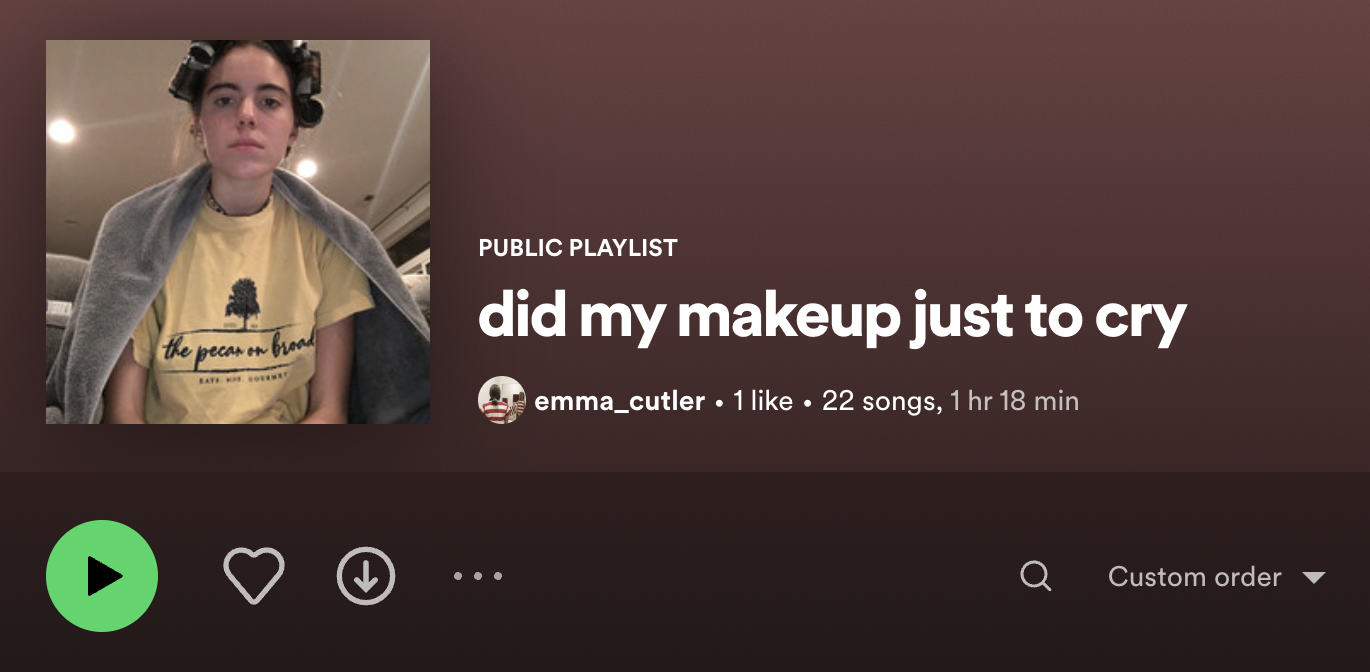
“I’ll listen to it when I don’t want to be sad; which sounds weird, but sometimes it just feels good to, like, grasp the emotion a little bit, and feel it, and then just get over it,” Townsend said.
According to Whyte, playlists work well as a bridge to processing emotion because the plethora of musical content readily available gives people an element of control; playlist makers are able to manage the tempo, dynamic, mood, message, and what instruments are featured. This allows them to personalize and customize the emotion they are trying to express, with precision.
She described her playlist-making strategy as a “music elevator,” where clients can start with songs that address their current state of emotion, and gradually add songs that travel up or down the elevator — ending at the state of mind they would like to achieve.
“They can go through and target those specific songs and those specific emotions, and decide where they want those songs to fall in place in their playlist: What’s the start of it, what’s the end of it?” Whyte said.
According to Whyte, music can also help people process not just feelings, but experiences. They help people access an “intimate” part of their mind that associates songs with memories and relationships.
Bowles said that music contains multiple elements that might act as connections to unique experiences, including the lyrics, the instruments, style of song, and the memories associated with a previous listen.
Along with “Songs for punching holes in the wall,” Vaclaw created a playlist called “A dad in traffic” — this one, a reflection of nostalgia for memories of her childhood.
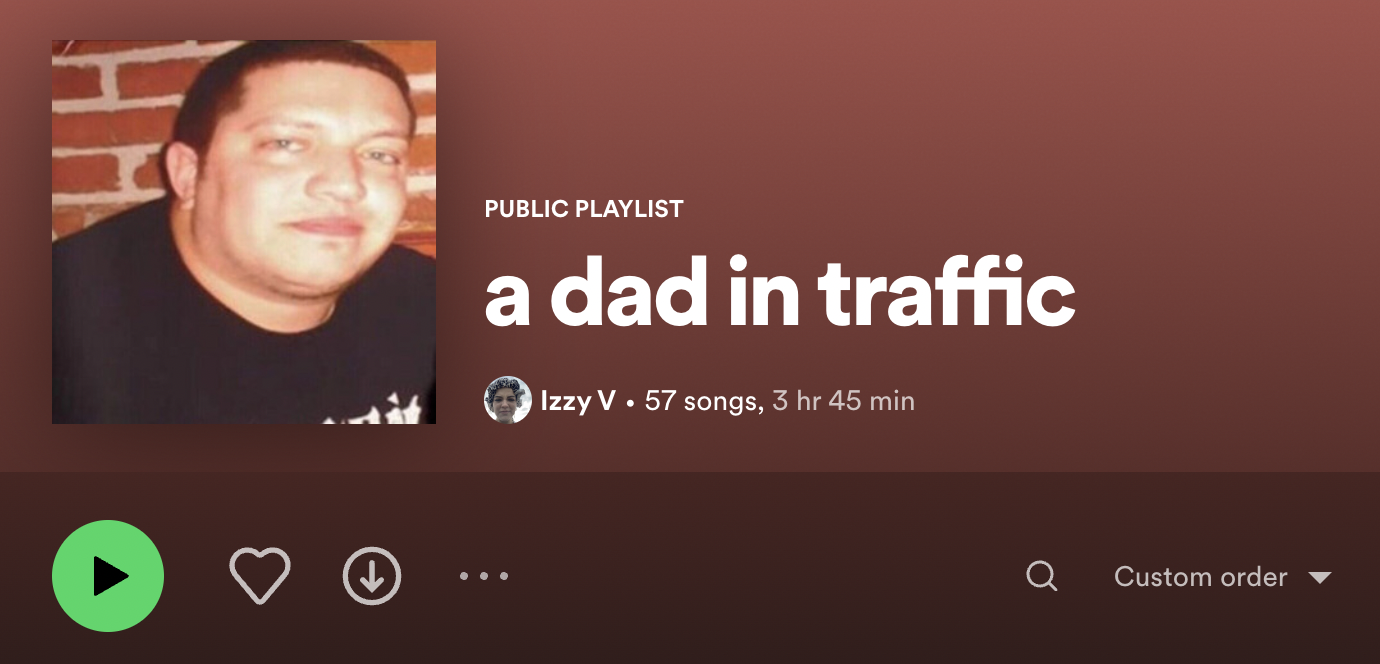
“It’s based solely off of driving in the car with my dad,” Vaclaw said. “I used to hate Pearl Jam, which he played all the time. Now, I love it.”
Even though she doesn’t participate in music therapy, Vaclaw said she feels that listening to music and playlist making have therapeutic qualities.
“Music lets me feel my emotions or reflect on them; it’s very introspective,” Vaclaw said. “Rather than talking about my feelings, which is hard, I can kind of express it through making playlists, in a way.”

